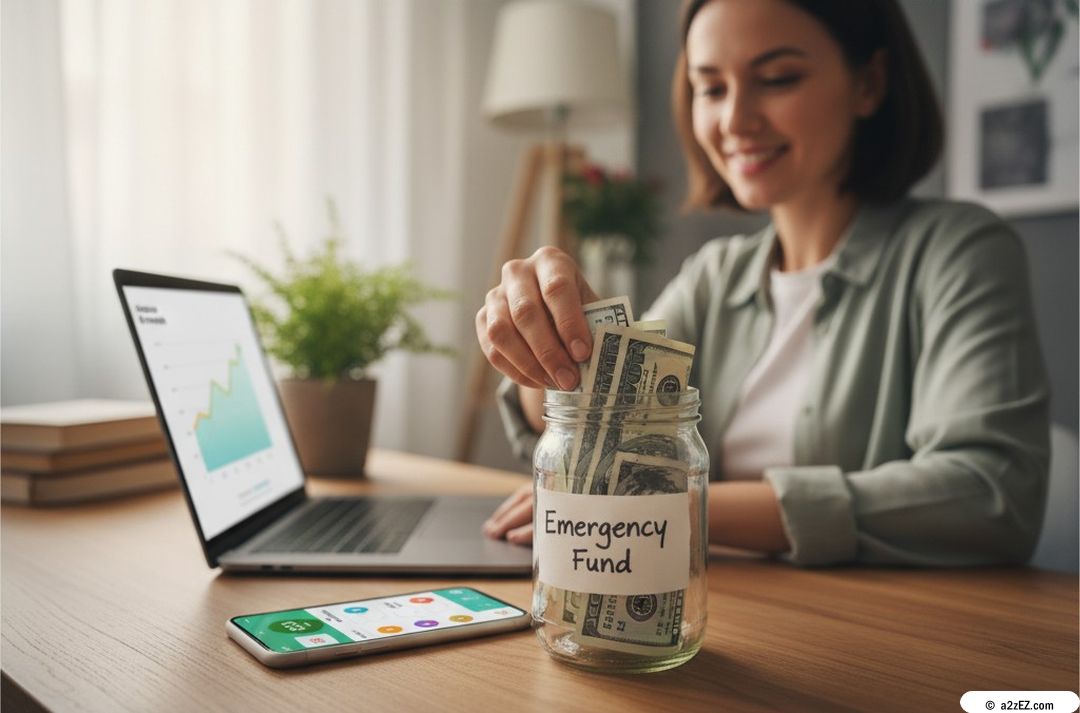“You need an emergency fund.” That advice feels impossible when you’re living paycheck to paycheck. But you don’t need thousands to start. You just need a small plan – and a big commitment.
Why an Emergency Fund Is Non-Negotiable
Emergencies don’t care how much you earn.
A flat tire. A surprise medical bill. A shift cut at work. Without some buffer, a small hiccup can spiral into credit card debt, missed rent, or worse – anxiety that lingers long after the bill is paid.
But here’s the truth no one tells you:
You don’t need to save thousands right away.
Even $100 in savings can help keep you out of panic mode.
Emergency funds aren’t about wealth – they’re about peace of mind.
How Much Should You Save?
3-6 Months of Expenses Is the Goal: But Not the Starting Line
That number is often thrown around as the “gold standard.” But let’s be real – if you’re living on $2,500/month, that’s $7,500 to $15,000. It can feel impossible when you’re just trying to make rent.
So instead, start here:
- Mini goal: $100
- Next milestone: $500
- Starter fund: $1,000
Each number buys you freedom. You’re not failing if you’re not at six months yet – you’re winning by starting.
5 EZ Ways to Build an Emergency Fund: Even on a Tight Budget
1. Set Up a “No Matter What” Auto Transfer
Send $5-$10/week to a separate account. Treat it like a bill. The habit matters more than the amount.
2. Open a Separate “Out of Sight” Account
Keeping it in checking = spending it. Use a no-fee high yield savings account or digital cash envelope. Just don’t mix it with bill money.
3. Use Apps to Round Up and Save
Apps like Acorns, Qapital, or Chime help you save spare change from everyday purchases without even noticing.
4. Redirect Unexpected Money
Birthday cash, refunds, tax credits, even $20 from selling something online: stash it. Emergency fund = windfall destination.
5. Cut One Habit, Temporarily
Pause 1 subscription, skip 1 takeout order per week. Funnel the difference into savings. Small swaps, big impact.
Where to Keep Your Emergency Fund
High Yield Savings Account (HYSA)
- Easy to access
- Earns small interest
- FDIC insured
Physical Envelope
Good for:
- Cash earners
- Small starter goals
- Avoiding bank fees
Avoid Risky Spots
- Not in checking (you’ll spend it)
- Not in stocks or crypto (it must be stable and liquid)
How to Stay Motivated When It Feels Slow
Track It Visually
Color in a savings tracker. Add progress bars to your phone lock screen. Use gamification to make it feel real.
Celebrate the Small Wins
Every $20 is a victory. You’re breaking cycles, creating safety, and building self trust. That matters more than perfection.
Final Words: You’re Not Behind, You’re Starting
You’re not bad with money. You just haven’t had a buffer before.
An emergency fund is one of the most powerful things you can build, not because it’s big, but because it’s yours.
Even if you only save $5 at a time…
Even if it takes six months to reach $500…
You’re doing the work.
And that work will protect you more than any credit card ever could.
An emergency fund helps you handle unexpected expenses without going into debt. Start small, $100 to $500, and build up over time using automatic transfers, spare change apps, or windfalls. It’s not about saving fast, it’s about saving consistently.
FAQs
Q: How much should I save in an emergency fund if I live paycheck to paycheck?
Start with $100-$500. That’s enough to handle many small emergencies. Build from there as income allows.
Q: What’s the best way to start an emergency fund?
Automate a small transfer each week – even $5 counts. Keep it separate from checking so you don’t accidentally spend it.
Q: Where should I keep my emergency fund?
Use a high yield savings account or a labeled savings envelope. Just make sure it’s safe, liquid, and separate from everyday money.
Take the Next Step
✅ Download your EZ Emergency Fund Tracker
📥 Sign up for our newsletter to get the full EZ Finance Starter Kit
📚 Or go back and read: Budgeting on a Tight Salary | 50/30/20 Rule – EZ Version
